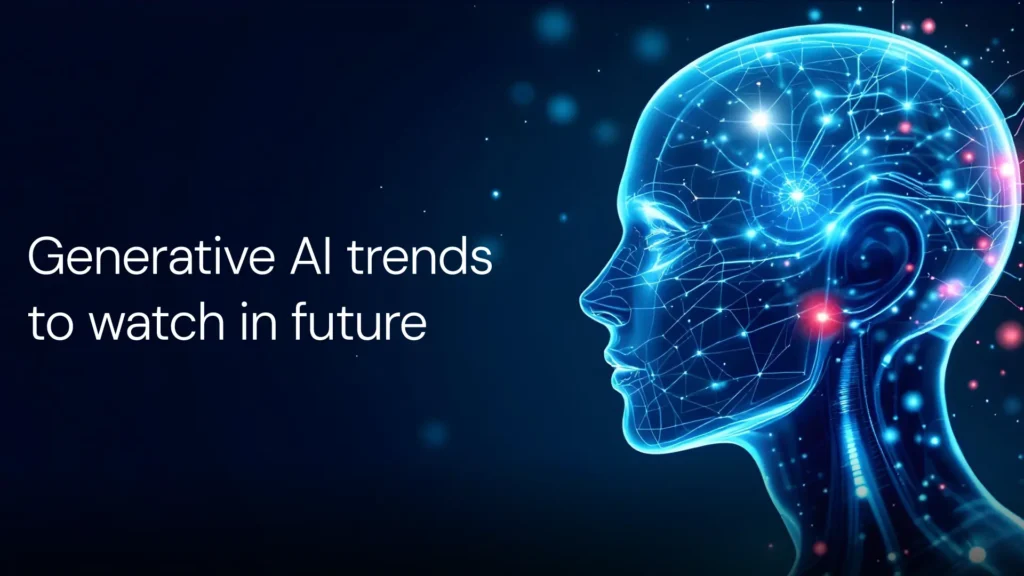
Artificial Intelligence is no longer a distant dream; it’s unfolding right before our eyes, faster than many industries can adjust. Every new model seems to stretch the boundaries of human and machine collaboration. Now, GPT-5 is capturing the world’s attention, promising to take natural language processing to a level that feels almost human. It’s a powerful reminder of how far innovation can go when curiosity leads the way. But innovation never stops. So, the real question is: what comes after GPT-5?
The momentum is not slowing down anytime soon. Since ChatGPT’s arrival in 2023, generative AI has quietly woven itself into daily life. It’s now part of how people work, learn, and express ideas. The promise is exciting: more creativity, faster problem-solving, and tools that make complex work feel effortless. But progress also comes with questions we can’t ignore, like how to handle bias, copyright, and the impact on jobs. These are the realities that will shape the generative AI trends defining 2026 and the years ahead.
Top generative AI trends
The year ahead will bring a fresh wave of LLM tools and deeper integration of generative AI into daily life. These are the trends that are likely to stand out in 2026.
1. Authenticity is king
As AI-generated content becomes impossible to escape, people and brands will crave something real. They’ll look for voices that feel honest, personal, and grounded in human experience. While AI will stay useful for quick facts and simple summaries, it’s the creators who can share genuine emotion and perspective who will truly connect and stand out from the noise.
2. Generative video finds its moment
Generative video is stepping into the spotlight. This year, Netflix brought it to the mainstream with the Argentinian series El Eternauta, where AI helped cut production time and costs compared to traditional animation and visual effects. By 2026, generative AI will likely be a standard part of entertainment, shaping big-budget TV shows and Hollywood blockbusters alike.
3. Agentic chatbots move from reactive to proactive
Chatbots are entering a new phase where they don’t just respond but take action. Instead of waiting for prompts, they’re beginning to work independently toward long-term goals. This year, ChatGPT introduced Agent Mode, and tools like Gemini and Claude followed with features that let them connect to third-party apps and perform multi-step tasks without human input. By 2026, these systems will grow from helpful chatbots into capable, action-driven assistants as the agentic AI era truly begins.
4. Generative AI jobs start to show their worth
People have spent a lot of time talking about the jobs AI might take away, but by 2026 the focus will turn to the new ones it creates. There will be growing demand for people who know how to work with these systems, in roles like prompt engineers, model trainers, output reviewers, and AI ethicists. The most valuable professionals will be those who can help AI tools and human teams work smoothly together. As this shift takes shape, we’ll start to see how important these roles really are in using AI responsibly and making the most of its potential.
5. Privacy-focused generative AI
As more companies start using generative AI, privacy will become a bigger concern. Businesses will look for safer ways to handle personal and customer data, using AI tools that keep information on company servers or on people’s own devices instead of sending it elsewhere. Apple is already known for putting privacy first, and by 2026, many other tech and AI companies will likely follow the same path.
6. Generative AI in gaming
By 2026, gaming could become one of the most exciting areas for generative AI. Developers are starting to build games with stories that change based on what players do, even when their choices are completely unexpected. Characters will no longer be limited to fixed scripts but will be able to respond, talk, and behave like real people. This will make games more immersive and interactive while helping studios lower costs and explore new creative possibilities.
7. The copyright dilemma
As generative AI becomes more common, the question of who owns creativity will spark even more debate. These systems learn from the work of real artists, writers, and musicians, but many creators feel their ideas are being taken without consent or fair reward. In 2026, the tension between innovation and ownership will keep growing. We’ll see more lawsuits, more public conversations, and a stronger push for rules that protect human creativity while still leaving room for technological progress.
8. Monetizing generative search
Generative AI is rewriting the rules of online search. Instead of typing a question and scrolling through links, people are getting direct, conversational answers. It’s fast, convenient, and changes what users expect. But for platforms like Google and Bing, it also raises a big question: how do you keep making money when fewer people click on ads? In 2026, we’ll start to see creative solutions take shape as Google’s Search Generative Experience and Perplexity AI test new ways to blend AI responses with advertising.
Final Thoughts
The story of generative AI is just getting started, and the possibilities keep growing. With every new idea, people and technology are learning how to create, imagine, and solve problems together in smarter ways. What happens next depends on how we choose to use it, with curiosity, creativity, and a bit of care for the world we live in.
The real change will come from people who see AI as a helping hand, not a replacement. It is about using these tools to think bigger, work smarter, and keep human touch in everything we do. As AI becomes part of everyday life, the future is not something far away. It is something we are building right now, one idea at a time.
At Xavor, we help teams connect technology and creativity to create meaningful impact. As we continue to explore the latest generative AI trends, we’d love to hear your thoughts and experiences. You can reach us at [email protected].
